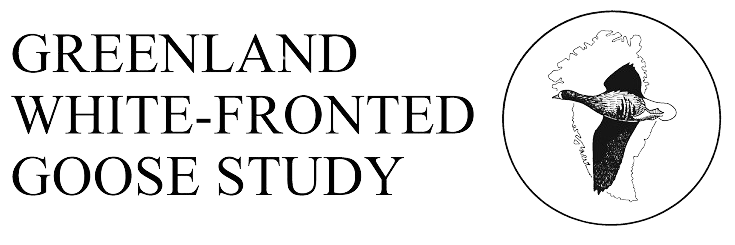History
A-W (1963) reported some 20 birds wintering at the head of Loch Snizort Beag which were sometimes reported from the Dunvegan area of the island. Murray (1954) considered them more numerous than Greylag Geese in the area. The history of this flock is rather shrouded in mystery, R&O considered the site deserted and even today, their daily whereabouts and ability to shift feeding areas make it difficult to keep tabs on this little flock.
Status
Regional importance (R&O 46). Although this flock has shown fluctuations over the years, the overall pattern seems to be one of a downward trend. In the late 1970s, there were regular reports of 70-80 individuals, but despite the overall increase in the global population, numbers consistently declined through the 1980s and 1990s. However, the birds have always been (and continue to be) notoriously elusive and unlike most flocks seem to make sudden shifts in their use of feeding areas, which make accurate assessment of their status difficult. The geese proved extremely elusive during 1991/2 and again in 1992/3, despite appearing occasionally at their favoured resorts, suggesting then that other undiscovered feeding areas may have existed at that time. No birds were located at all for a run of seasons in the late 1990s when the flock deserted the hitherto most frequently used areas near Skeabost Bridge. Subsequent searches and effort eventually found them much further to the north around Kilmuir, much further north along the eastern edge of Loch Snizort, where the brids have resorted in subsequent winters. There have been no recent attempts to search the Dunvegan area in recent years, there have also been occasional records from this part of Skye and on nearby Vaternish as well. If these represent the same flock they have a very large area of potential feeding areas throughout the northern part of the island and it may be that the trend in numbers displayed below does not reflect their true abundance. There also remains a possibility that there is interchange between these birds and the other Skye flock (see below).
Maximum winter counts:
Breeding success: There are no consistent production data from this site.
Feeding sites and habitat: For most of the period covered by the counts presented here, the flock fed around the southern end of Loch Snizort Beag on rough and improved pastures, mostly without rushes and on freshwater marshes and wetlands throughout. Frequently used areas in particular were around Borve (NG4448), Drumuie (NG4546), Tote (NG4149), Reinmore (NG4248), Carbost (NG4248), Peiness (NG4246) and Coulnacraggan (NG4345), but the favoured areas were in the immediate vicinity of Skeabost and Skeabost bridge (NG4248) and for many winters in the 1980s and 1990s they fed on the Skeabost football pitch with some frequency and regularity, the only known use of soccer turf in the range. Since 2004, they have been seen with great regularity at Chalium Chille, Kilmuir and this now seems to form their regular foraging area.
Roosting sites: The roost sites have never been firmly established for this flock, but they are thought to roost either on the nearby Loch Niarscu or on the offshore Ascrib Islands.
Habitat change: Not known
Aircraft disturbance: None known
Hunting disturbance: Some shooting occurs in the area, and the geese are generally highly unapproachable in the area, but it is not known to what extent hunting may affect this flock.
Agricultural disturbance: No more than in any comparable area of such farmland.
Site safeguard: None.
SNH Natural Heritage Zones/Area: Western Seaboard.
Threats: There has been a house built on the Ascrib Islands in recent years which may have affected the population. The feeding geese suffer a little disturbance during the daytime from sheep, shepherds and dogs. The river valley floods regularly but quickly abates, there has been little drainage or agricultural intensification of the area in recent years. Saturday football matches must have had a profound effect on feeding patterns at Skeabost!
Linkages with other sites:
None
References
Murray, I.M. (1954) Notes on the birds of Skye. Glasgow and West of Scotland Bird Bulletin 3(1): 6-13
